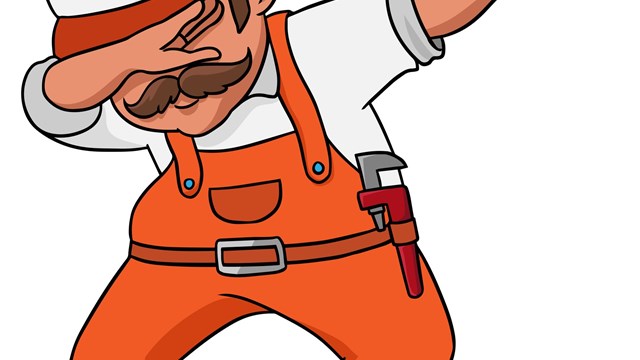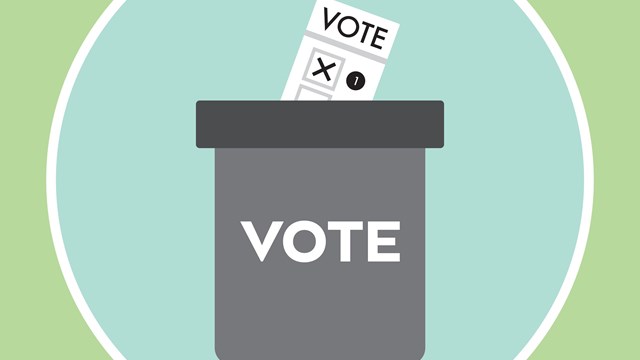Health clubs, fitness centers and private garden spaces are just some of the amenities a condo or co-op can provide to enhance the pleasure and convenience of its residents. However, another, less common amenity to consider is an interior or exterior play area. A well-designed, well-built playground not only draws families with young children into a building, but also creates a space for older children to keep healthy and active and spend time with their parents and adult guardians.
When designing a playground, three concerns are paramount: safety, durability, and budget. Playgrounds aren't just about welded steel jungle gyms and metal slides anymore. "[Board members] need to know that the industry has totally revolutionized the quality of materials and the variety of play events, and has changed tremendously in the guidelines to ensure children's safety," says Tom Rooney, sales and marketing director for Gotham Playgrounds and Surfacing in Glen Cove, Long Island.
According to the Consumer Product Safety Commission (CPSC), there are over 200,000 playground equipment-related injuries each year, just a tiny proportion of which involve equipment in apartment complexes. To help keep that percentage low, industry professionals adhere to strict building guidelines set forth by the American Society of Testing and Materials (ASTM) and the CPSC.
In addition to these guidelines, playground equipment must also meet the requirements of the Americans with Disabilities Act (ADA) that require - among other things - that recreation facilities and play areas be readily accessible to and usable by disabled individuals.
The choice of playground equipment is almost as important as the choice of the surface that it sits on. Falls from playground equipment onto the surface below is a contributing factor in 79 percent of all playground injuries. As a result, there are now certified play surfaces that help to insure the maximum safety and protect children from falls. Options for these surfaces include poured rubber, shredded rubber, and wood fiber. According to Gotham's surfacing information, poured rubber surfaces are the most permanent solution that provides cushioning thickness and shock absorbency, while the top layer provides durability. Shredded rubber is a loose protective surface that gives way when a child falls. Wood fiber is an engineered wood fiber that contains no waste wood and is environmentally friendly.
With today's durable and safer equipment and surfaces, a playground is a sound financial investment. "Barring any kind of vandalism, today's playgrounds should last until these kids are through college," says Rooney. "Poles and clamps have a lifetime warranty, plastic parts have a 10-year warranty. The only reasons to take down one of these playgrounds are that something new and exciting has come up or there has been a change in population of the building and a playground isn't needed."
With careful planning, an enjoyable playground can fit any budget. "The cost will depend on the scope of the project; a simple project like a swing set and some other equipment may be a few thousand dollars, but some projects run into the hundreds of thousands," says Sal Romanello, president of PlaySafe Playground Systems in Brooklyn.
Your board should know the budget before meeting with a playground professional to design a unit to suit your needs. When designing a site, Lauren Martelli, owner and designer of Universal Play Systems Inc. in Pelham, New York, says to keep in mind that playground equipment can be included for the older kids too, as well as those who will sit with the children. "Playground equipment can include aquatic play, basketball equipment for teens, or even a fitness course," Martelli says. "You also want to remember parents and seniors who might have lunch at the tables while watching their kids."
There are also a range of extras to choose from, such as benches, tables and various shading options. "Creativity and designs for playgrounds have gotten elaborate," says Romanello. "With today's technology, you can mold equipment into the color and shape that you want, so designing the site can be fun." Themes like dinosaurs, castles, and fire trucks are also becoming popular in playground equipment today.
If your building already has a playground, it might've seen better days. Many already-existing playgrounds were built around the 1960s or earlier, and have never been substantially repaired. The equipment may have missing or broken pieces, sub-standard safety features, or inadequate ADA-compliant components.
However, have a professional playground designer and inspector tell you what condition the unit is in and if repair is worth the cost. "You have to be careful about the surface and the equipment that's used; that it meets the most recent guidelines and that it's handicapped accessible," says Romanello. "Depending on the condition of the unit, we might suggest removing the entire thing."
Whether you are repairing or creating a new system, an assessment by a professional is essential. "One of the reasons for our initial visit is to determine the needs of the building," says Rooney. "For example, younger children ages two to five will need different play equipment than older children ages five through 12. Once that is done, you will typically choose equipment that helps gross motor skills, imaginative play, and social interaction, like slides, climbing pieces, tunnels to crawl through, or a driver panel and gear panels. But the budget and the space are key."
Choosing the best equipment for your building's play area should take some thought. According to an article from the International Play Equipment Manufacturers Association (IPEMA), "An exceptional play area is not just the creative assemblage of playground equipment; the design should take into account the way the kids are going to use it. In order to accomplish such a goal, the ideal manufactured playground environment contains elements for social interaction, movement, sensory experiences, and contact with nature."
A professional playground design and installation company can help your board meld the social, sensory, and just plain fun elements of a good play area into your building's space and economic constraints.
"All of our project coordinators are licensed," says Martelli, who has ten staff members, some with unique design specialties. "I work with children with disabilities - that's my forte - and I enjoy it, but I also have a person whose specialty is aquatic water play and I also have a landscape architect."
The National Recreation and Parks Association (NRPA) has created a playground safety-training program to complement the playground safety standards and guideline efforts of the ASTM and the CPSC. In 1991, the first National Playground Safety Institute (NPSI) Program was held in Baltimore, Maryland. Now, just over a decade later, the Institute has certified over 7,000 playground safety inspectors worldwide.
When choosing a certified playground safety inspector, be aware that the NPSI certification is valid for three years; so be sure to check the date of the inspector's documentation. The apparatus will begin to be installed approximately four to six weeks after the proposal is accepted. The length of time to complete the job will depend on its complexity. Many firms do not have professional installers on staff, but instead subcontract to licensed installers.
"Most of us have people we work with that are licensed installers - and we're very concerned that the installers meet all the guidelines," says Martelli. "Once they're done with the installation, we go back out and do a final inspection it to make sure it's fine."
Follow-up safety checks depend on the firm. Some firms offer service contracts and will make annual safety-check visits to the site as part of the agreement. Other firms will service when needed. "We ship the customer a playground maintenance box that includes spare parts, touch-up paint, a maintenance manual, and a checklist for scheduled maintenance," says Romanello. "When the customer requires that we go there to fix something, we do it. It's a nice way of continuing the relationship with the customer, and it's important because a child can get hurt."
Creating a safe environment for the residents is the primary concern, but experts remind building owners that the inevitable can, and does, happen. "Children can get hurt," Romanello continues, "so we assume the buildings have their own liability insurance for the building." Martelli agrees; "Liability is an enormous issue, especially when you have other children in the area using the equipment too."
That said, however, a board shouldn't let the specter of inflated premiums discourage them from installing a play facility in their building. According to Edward Mackoul of the insurance firm Mackoul & Associates, Inc., based in Long Beach, New York, "The liability insurance would cover [a playground]. Most companies want to know up front if a building has a play facility, and want to make sure there's adequate rubber matting under the equipment itself, but basically, a playground would fall under the building's liability policy."
As to the impact installing play equipment might have on a building's insurance premiums, Mackoul says, "Honestly, it wouldn't change it that drastically. Most companies don't even have a separate charge for a playground, so it depends on the company you're dealing with. Most base liability insurance on the number of units, or whether there's a swimming pool "“ if there is a charge for a playground, it's not going to make a huge difference in the building's budget."
"But you have to make certain you've done everything possible to protect the children. It's a big investment to make a playground, but you want to have something that is fun, safe and that is going to last."
James Fenniman of Bollinger NY Inc. agrees and has some recommendations for keeping playgrounds safe and premiums low. A playground area should be restricted to the building shareholders and families, especially if there is no attendant or parental supervision. "People should make sure they watch their own children. It's not a day care facility," Fenniman explains.
Another good idea is to make shareholders and unit owners sign a hold harmless agreement - a waiver protecting the building and the board - should a child become hurt while using the equipment, Fenniman says. Also make sure the playground is properly built by a professional institutional playground installer - "not a couple of guys with lumber building a jungle gym," quips Fenniman.
As for changes to the premium, Fenniman doesn't see any great increase as long as some of the above steps are taken to minimize liability. He does however caution that having an interior or exterior playground facility is an additional risk and may limit the availability of coverage or the number of insurance carriers that offer the coverage you seek.







Leave a Comment